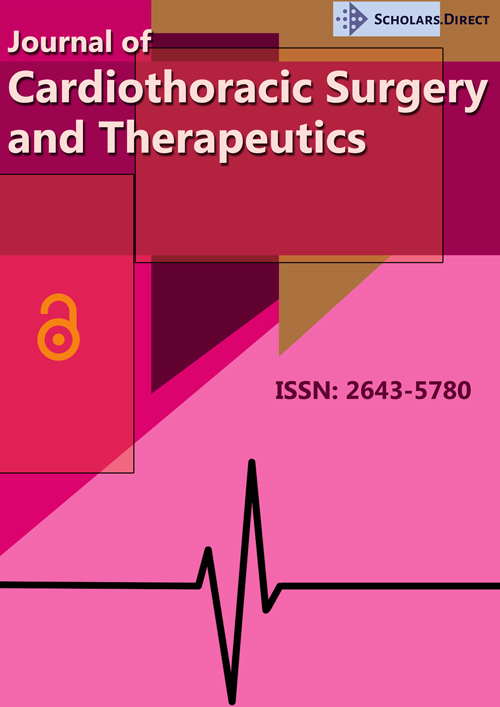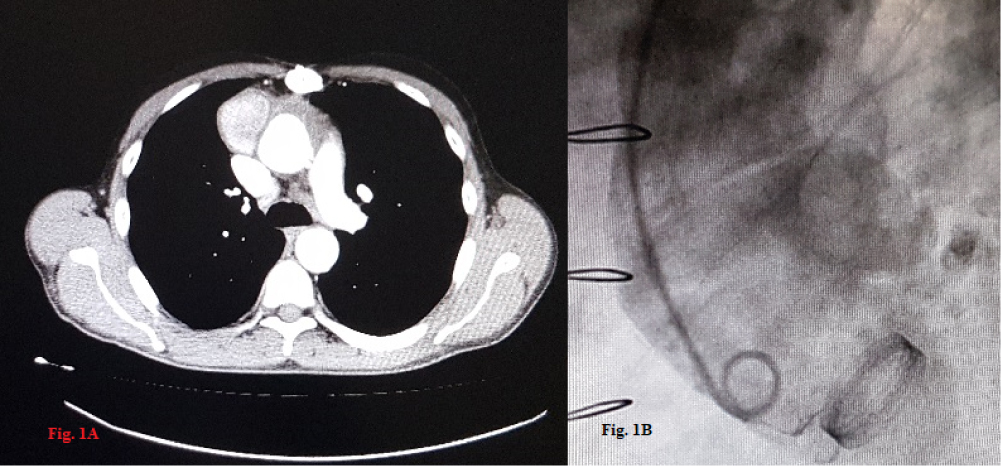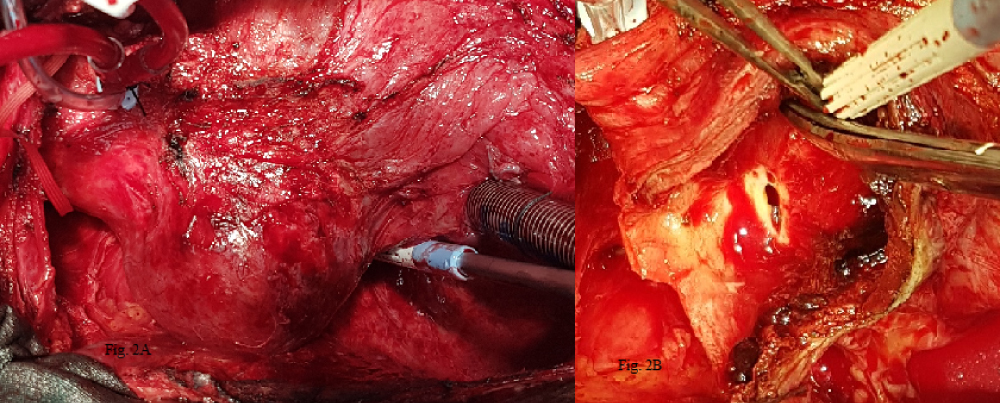Pseudoaneurysm Formation of the Ascending Aorta
A 50-years-old male patient, hypertensive, on renal dialysis and with secondary hyperparathyroidism, underwent aortic valve replacement with a #23 mm Sorin bileaflet mechanical prosthesis. Three months later he had a redo operation to fix a perivalvular leak. There was no evidence of infection. A year later he was referred to us with an asymptomatic paraortic mass in a CT Thorax. Further investigation with CT angiogram (Figure 1A) and aortogram (Figure 1B) revealed a 5.5 × 4.8 cm mass in close proximity to the middle and lateral aspect of the ascending aorta, filling with contrast fluid. During the third operation, a pseudoaneurysm formation was confirmed (Figure 2A). Resection of the wall of the sac revealed a dehiscence 4 × 4 mm at the lateral angle of the previous aortotomy (Figure 2B) due to broken 4/0 prolene stich. The dehiscence was repaired with two 2/0 pledgeted ethibond stiches. Uncomplicated recovery. No evidence of recurrence 12 months following surgery.
Conflict of Interest
The Authors declare that there is no conflict of interest.
Corresponding Author
E Andreas Agathos, MD, PhD, Department of Cardiac Surgery, Euroclinic of Athens, Athanassiadou 7-9, 115 21 Athens, Greece, Tel: 30-2106801237.
Copyright
© 2020 Agathos EA, et al. This is an open-access article distributed under the terms of the Creative Commons Attribution License, which permits unrestricted use, distribution, and reproduction in any medium, provided the original author and source are credited.






